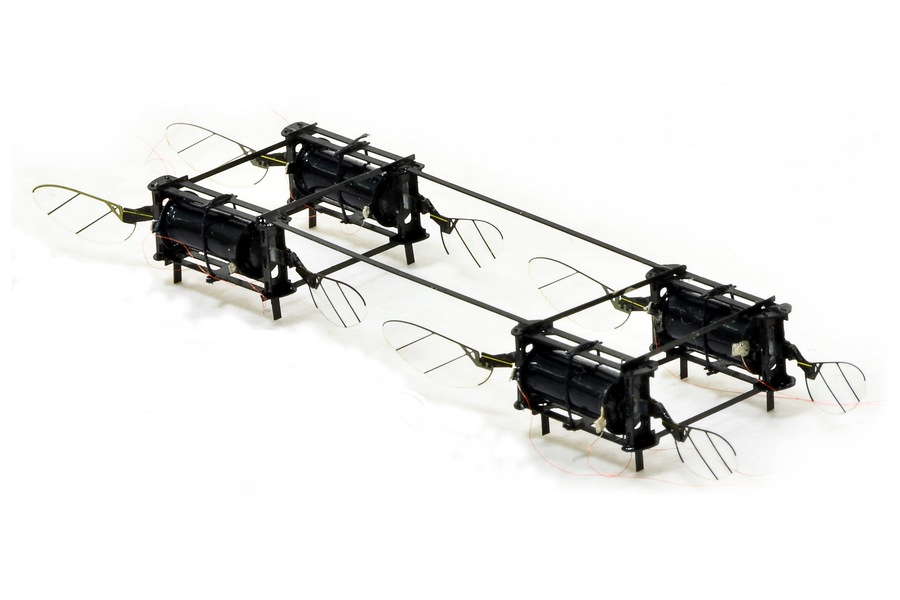MIT News March 2, 2021
Current state-of-the-art subgram microaerial-vehicles (MAVs) are predominately powered by rigid actuators such as piezoelectric ceramics, but they have low fracture strength (120 MPa) and failure strain (0.3%). Although the existing systems can achieve a high lift-to-weight ratio, they have not demonstrated insect-like maneuvers such as somersault or rapid collision recovery. An international team of researchers (USA – MIT, Harvard University, Hong Kong) has developed a 665 mg aerial robot that is powered by novel dielectric elastomer actuators (DEA) which achieves high power density (1.2 kW/kg) and relatively high transduction efficiency (37%). They incorporated this soft actuator into an aerial robot to demonstrate novel flight capabilities. The insect-scale aerial robot has a large lift-to-weight ratio (>2.2:1) and it achieved an ascending speed of 70 cm/s. In addition to controlled hovering flight, it can recover from an in-flight collision and perform a somersault within 0.16 s. This work demonstrates that soft aerial robots can achieve insect-like flight capabilities absent in rigid-powered MAVs, thus showing the potential of a new class of hybrid soft-rigid robots…read more. TECHNICAL ARTICLE

Insects’ remarkable acrobatic traits help them navigate the aerial world, with all its wind gusts, obstacles, and general uncertainty. Credits: Image courtesy of Kevin Yufeng Chen